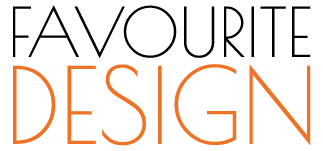Discover the interview of Pere Page in Vilafranca del Penedès, Spain.
How did you become designer ?
Even in my adolescence, I collected all sorts of printed material that I liked: beer mats, magazine adverts, flyers that caught my eye. I still have these albums. The world of images attracted me, and quickly stimulated my interest in photography.
After I qualified from higher education, I studied design in the Llotja School of Applied Arts in Barcelona. My first contact with the wine sector was when I went to work for an important Penedes wine producer. I worked for several years in the company’s printing department and worked on their labels every day. One of my favourite memories is of the back labels, with detailed information on the way each wine was produced; the grape varieties, whether local or imported, the fermentation, the ageing in oak casks, or later in the bottles, the tasting notes and pairing suggestions, etc. In 1991, after some collaborative work with cultural organizations, I set up my own studio, and that was how Pagà Disseny started.
We offer a consultancy service in branding, design and packaging for food and drinks. 80% of our clients are in the wine sector, food sector and we also work with some service companies.
Our client profile basically consists of family businesses and small producers, with a few large companies.
In the first decade we worked with companies in many sectors, however, due to our location in the Penedès, where there is an important wine industry, we found ourselves specializing in this sector. This was a natural transition, which we weren’t specifically looking for.
In the 90’s, we carried out a lot of projects aimed at corporate identity and also did work for publishers,
However, from the year 2000, as the Internet and digital printing world exploded onto the market, this speciality became “democratized”, in the worst sense, filling the streets with so-called “visual contamination”: projects, posters and very low-quality adverts that flooded the media world.
Only the most aware companies understand that their communications project should be closely linked to a coherent branding that has been studied in depth. Clients’ expectations are higher as regards the product itself, since this is their shelf image in the physical market.
How would you define your vision of design, your style ?
We try to work in different registers depending on the product or the target market. Each product as well as the company’s own identity has different characteristics which need to be transmitted in different ways and in different styles.
An artist, or an illustrator can have a very particular style, whilst I believe that designers must be more flexible, working on the basis of the aims of each project, whether that is to obtain an increase in product sales or a closer connection with each different kind of consumer. It is not the same to approach a product design aimed at the new milennial generations to aiming at a higher range for the more conservative consumer.
However, we think of design as a useful tool for the development of culture. Like publicity, design is a reflection of the society in which we live.
For the future, what are your professional projects ?
Thinking of the new year, in addition to continuing to work with our current clients, some major projects in the pipeline include the design for a vodka from Byelorussia, a range of soft drinks from Thailand based on vinegar and a range of wines from Navarra for export to Germany.
What do you like the most in your job ?
One of the greatest challenges of a design is its similarity to a writer faced with a blank page. At the beginning it creates a degree of stress, but once the project begins to mature, generating ideas and finally focusing on the end solution which meets the client’s and consumers’ expectations, the satisfaction of a job well done brings with it a satisfaction that is well worth the effort involved.


